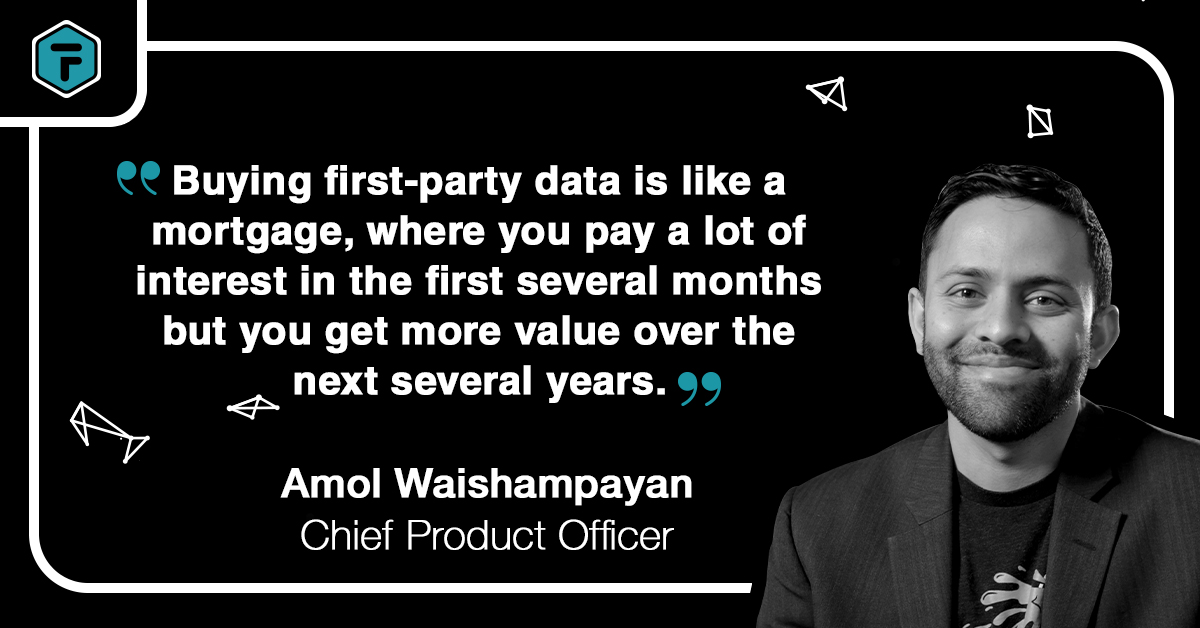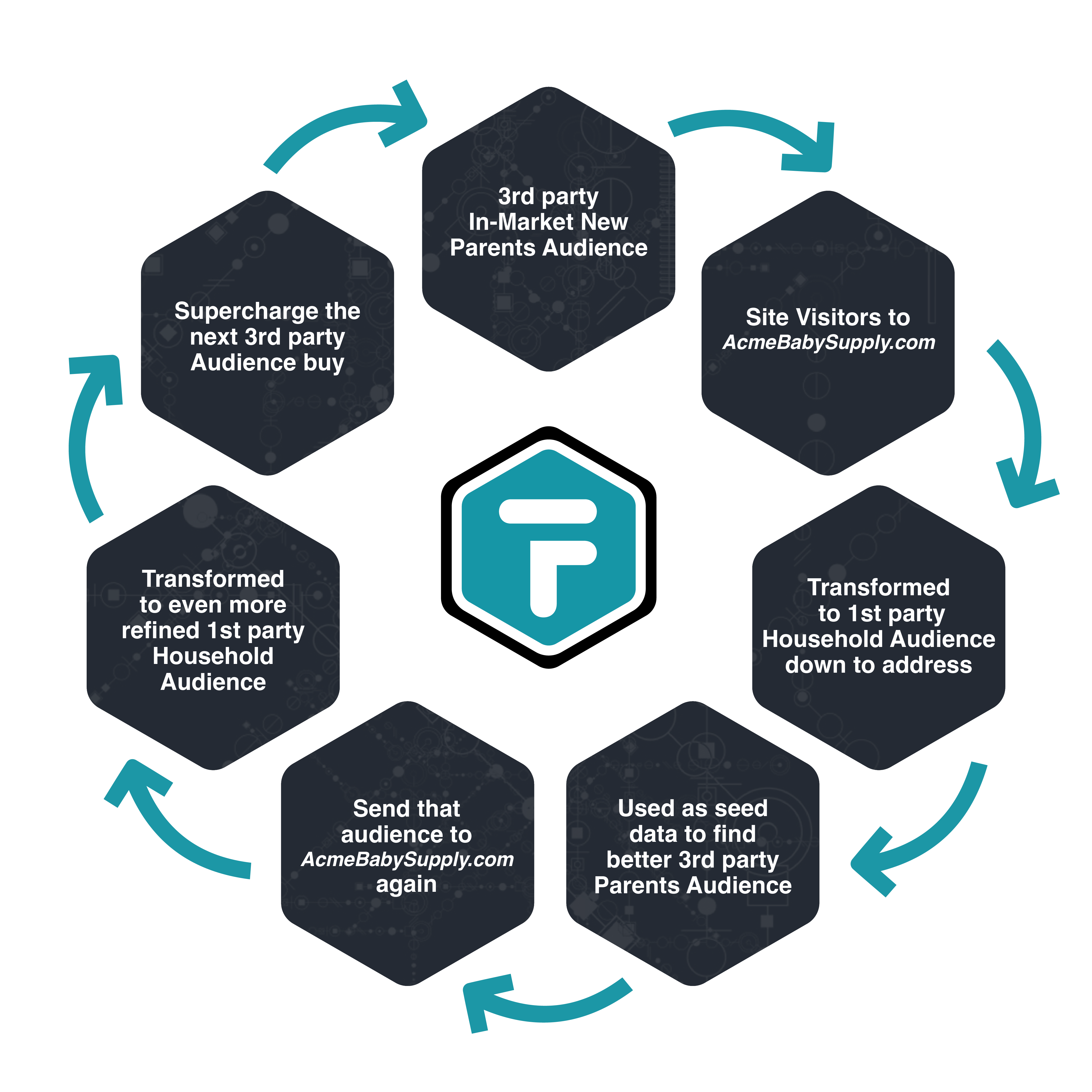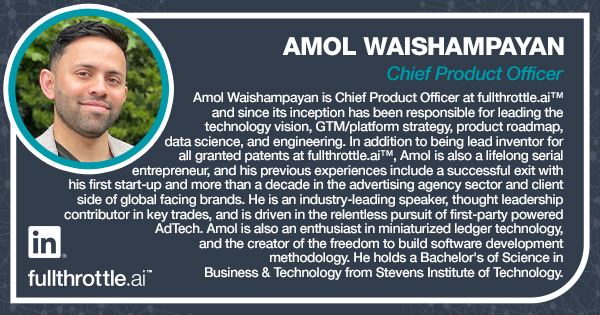
A Peek into the Data Future
By Amol Waishampayan, Chief Product Officer
These are some trends we might see happen depending on how things play out in the larger ecosystem.
For many years, there have been companies built around generating third-party data assets and selling their data to other companies, such as advertisers or AdTech partners. Simplified, they are a data asset that has spent decades on their third-party data collection which they sell to different organizations. Not all assets are equal, and the quality and precision of the data over time has been the subject of much debate.
It worked well in a world with cookies and cookie syncs.
What happens in a world with more privacy regulations? With GDPR and CCPA, it becomes difficult to sell that data. The transfer and the selling of data will start to become prohibitive legally and for many other reasons, such as culture change.
What happens if you are a third-party asset? What choices do you have left to keep yourself resilient?
As these changes begin hurting third-party assets, there are a couple of things we’re seeing happen in the marketplace due to the desire for resiliency.
The First Trend
If you can no longer acquire third-party data, your assets are not going to grow. In fact, you could argue that your assets will start to shrink over time, as people are going to opt out and request a deletion of data.
The loophole?
To combat this shrinkage, we are seeing third-party assets buying companies. Tons of little companies have been building up smaller data assets over the last decade. In other words, if you can’t straight up buy data anymore, you can buy the company that already has data. The data is technically yours once you’ve bought the company.
It’s uncertain at this time if that will stay legislatively shielded or not. However, it exists for now.
So, now third-party assets are gobbling up all the different still available companies. Ultimately, they will run out of companies to buy or they will all be bought up. At that point, these mega third-party asset umbrellas are going to need a better and higher volume of first-party seed audiences from advertisers to continue to deliver value, precision, and accuracy.
The Second Trend
We will see publishers, such as CNN or even smaller content sites, collecting audiences and creating data. In the past, publishers would pass their data off to other companies and those companies would manage the audiences, while the publishers managed the content. Now, they will just keep collecting and creating first-party data—and really, they are the only ones that can help generate new data.
Whatever is left of these third-party data assets, maybe they’re good audiences, maybe they aren’t — that is part of the challenge. Whatever is there, people are still buying it. It will shrink over a long period of time. From a real-time, on-the-ground feeling, there may be no visible effect today. This is the long-term strategy.
Using Third-Party Data Assets
The cool thing for brands, publishers, advertisers, and anyone using third-party data assets— you can continue to use the third-party data and drive those audiences to you. Leverage third-party data audiences and then use a transformation company, like fullthrottle.aiTM, to transform them into your own first-party household data.
As an Example
Let’s say you are a company that sells baby supplies.
Your third-party data asset offers you a list of physical, digital, and PII audiences of people who just had a baby, so they are in the market for your products. You are hopeful this list will work and want to see what kind of traffic it drives to your website. Maybe you plan to send mail and target these visitors with digital display ads. However, this data you are essentially renting, you want it to convert—otherwise, it’s expensive, with very little ROI. Ideally, you want to own your data.
fullthrottle.aiTM is a transformation company that takes those programmatic and cookie audiences and turns them into first-party households. As a baby supply company, you get to keep the first-party data. Some of those people may convert now, some may convert later. Either way, you get to use those audiences.
The second part of the transformation is to create a super-powerful loop.
You can go back to your third-party data asset, now that the first list they gave you has been transformed from third-party data into first-party data. With the data, you can request they use it to hone in and focus on anyone who is going to buy a stroller within a week. They can use this household data to find even better prospects in their huge pool of assets.
Then, they can send it back to you, where you can turn them back into first-party households.
This ping pong process of third-party audiences transformed to first-party household data, seeding an even more powerful third-party audience, bringing you even more precise first-party data is a super powerful loop.

Essentially, what you do is refine a really good in-market audience. It doesn’t matter what the product or service is—you are getting more out of these third-party data assets than you ever have before.
The Analogy Here Is:
It's a lot like buying a home. Maybe you were renting before but now you’re paying a mortgage and owning the home. Buying first-party data is like a mortgage, where you pay a lot of interest in the first several months but you get more value over the next several years.
Reach Data Democracy
What we are doing at fullthrottle.aiTM is trying to democratize access for publishers to be able to monetize audiences in the cookieless future. We see that the top five percent have their own solution and large data assets.
If you are not a huge publisher, we’re democratizing your access to be relevant and viable in the cookieless future, which looks apocalyptic specifically to you.
To start collecting first-party data, schedule your demo here.


